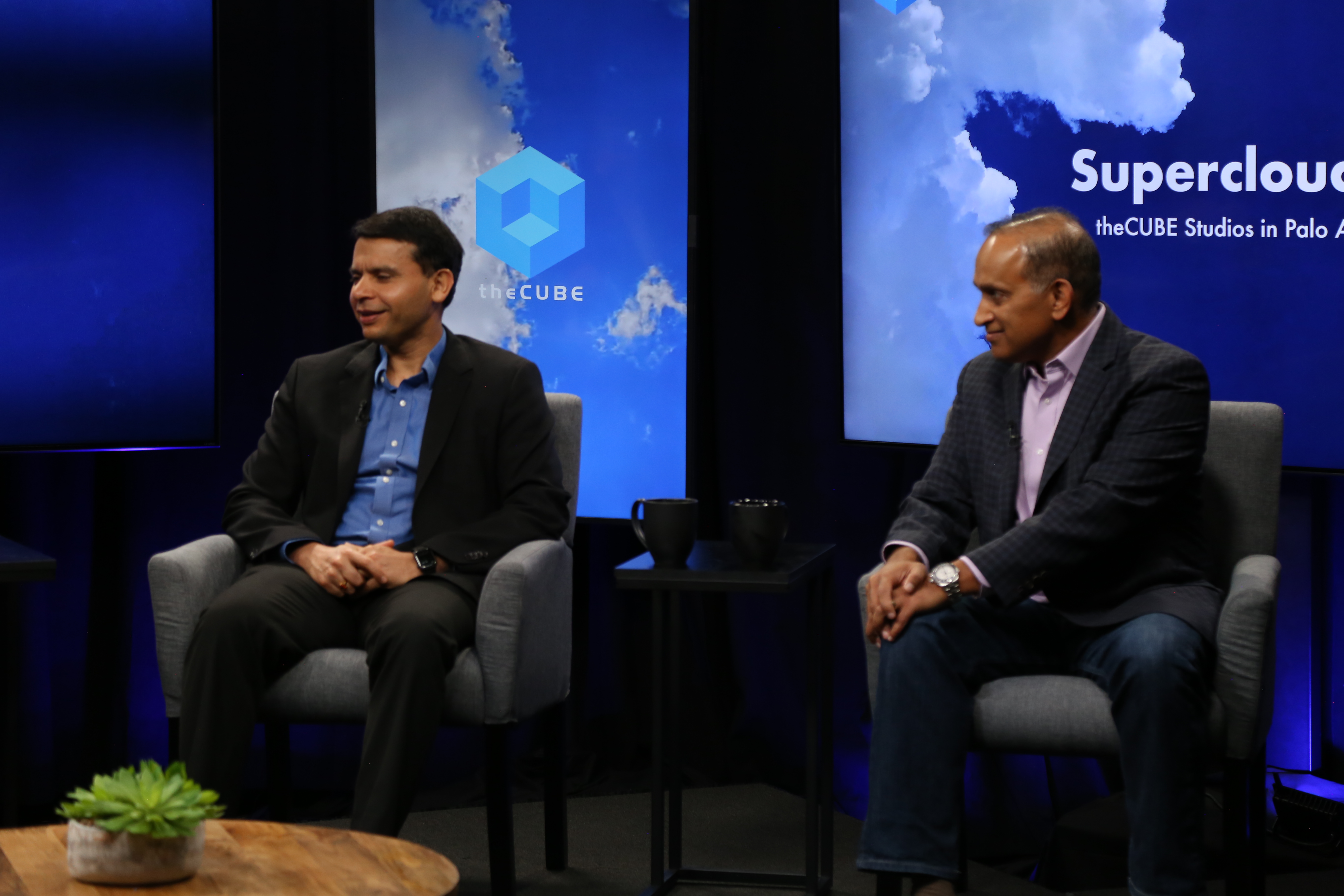 BIG DATA
BIG DATA
 BIG DATA
BIG DATA
 BIG DATA
BIG DATA
The ubiquity of ransomware attacks has become such a scary scenario for enterprises that the issue has escalated to a board-level one.
With data as the uber-valuable commodity it is today — and given the rate at which it’s sprawling — an inevitable fragmentation has created fertile ground for ransomware actors to operate.
“Every year data just grows like crazy; managing data is becoming harder and harder,” said Mohit Aron (pictured, left), founder and chief technology and product officer at Cohesity Inc. “There are so many cloud options available as different vendors have different clouds. There’s still on-premises, there’s edge infrastructure. And the number one problem that happens is our data is getting fragmented all over the place.”
Managing so many fragments of data is getting increasingly more difficult, including in the cloud, on-premises, or at the edge, Aron explained.
Aron and Sanjay Poonen (right), president and chief executive officer of Cohesity, spoke with theCUBE industry analysts John Furrier and Dave Vellante at Supercloud 22, during an exclusive broadcast on theCUBE, SiliconANGLE Media’s livestreaming studio. They discussed Cohesity’s view on supercloud, as influenced by the company’s data management and security focus.
There’s always been a debate around the question of whether security is an adjacency or a subset to data management and backup/recovery. From Cohesity’s point of view, data management is the overarching concept within which security resides.
“Security is part of data management,” Aron said. “You start maybe by backing up data, but then you secure it and then you do more with that data. If you’re only doing security, then you’re just securing the data. You’ve got to do more with the data so data management is much bigger.”
The iceberg analogy also slots in perfectly when understanding the scope of holistic data management as unique from security and backup/recovery operations, according to Poonen.
“If you look at companies like Snowflake and Databricks, they’re doing the management security and mostly analytics of data that are the top of the iceberg, the stuff you see,” Poonen explained. “But a lot of the stuff that gets backed up to the archive is the bottom of the iceberg that you don’t see. So I think the management, security and analytics of secondary or backed-up data or cold data is a huge opportunity, and that’s data management.”
Whether known as hybrid multicloud, full-fledged data management or supercloud, modern computing needs to change the enterprise computing status quo in order to exist as its own idea. Thus, as operating environments change toward increased complexity, supercloud should ideally abstract away that complexity.
Providing a cohesive experience across multiple clouds for data management, data migration, testing and analytics at scale is Cohesity’s outlook on how it’ll add to the supercloud paradigm, according to Aron.
“What we do is we provide a platform,” he said. “We have tentacles on-prem, in each of the clouds. And on top of that, it looks like one platform that you manage. We have a single control plane, a user interface. It’s a single pane of glass that our customers can use to manage all of it. And now it all starts looking like one platform.”
In 2020, Cohesity launched its as-a-service offering for data management in collaboration with Amazon Web Services Inc. In abstracting away complexity and giving customers a wealth of choice, the platform was built so that users needn’t manage infrastructure whatsoever. In addition, customers can then combine the platform with other Cohesity offerings, according to Aron.
“They get a choice of the way they want to consume our software,” he explained. “They can consume it as a SaaS, service in the cloud. They can buy our software, manage it themselves, offer it to a partner on-premises, or what have you. But it still looks like that one platform, what you’re calling a supercloud.”
There’s also the interesting scenario of on-premises customers who want a SaaS platform like Cohesity’s but would like to spread it in an identical experience across clouds.
“Collectively, all these clusters from the data plane that stores the data, but it can all be managed using the control plane,” Poonen explained. “So you still get that single image and experience across all clouds.”
Here’s the complete video interview, part of SiliconANGLE’s and theCUBE’s coverage of the Supercloud 22 event:
THANK YOU